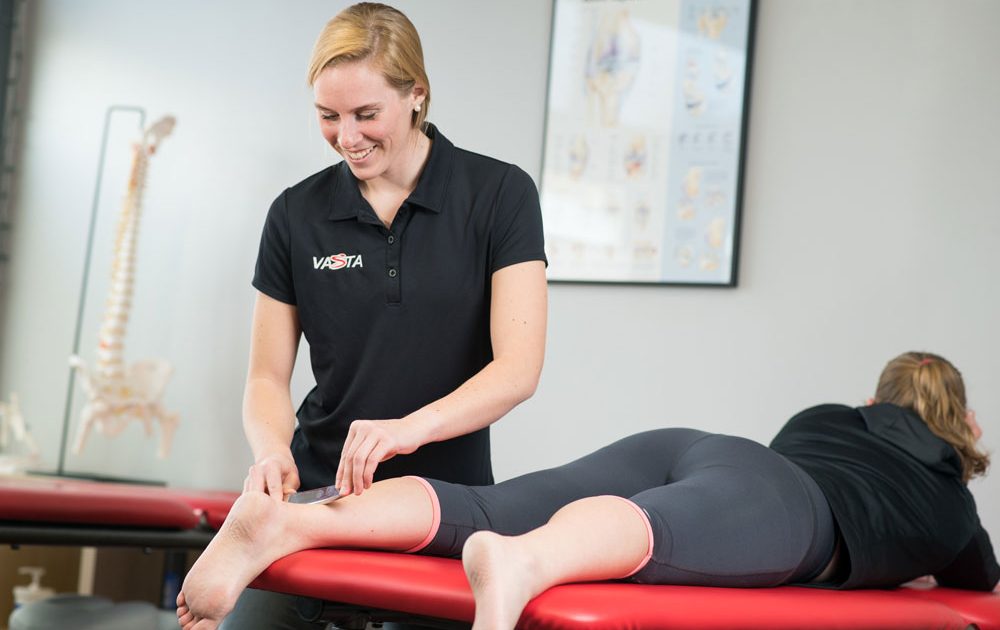Soft Tissue Mobilization refers to techniques that stretch, massage or otherwise ‘free up’ the body’s soft tissues.
‘Soft tissue’ is everything other than bone. An injury to a muscle, tendon, nerve, ligaments, or connective tissue (known as fascia) is a musculoskeletal injury of the soft tissue. Soft tissues react to injury in a unique manner. When an injury occurs, inflammation follows, which triggers a cascade of events on the cellular level. The normal healing response includes the formation of fibrous (scar) tissue in and around the injured area. While this can be important and even necessary for healing to take place, injuries can often result in excessive fibrous tissue formation. The resulting ‘fibrosis’ can prevent the muscle/tendon or nerve from lengthening, contracting or moving as it once did which can lead to a loss of mobility. Pain can result, as well as a predisposition for re-injury at the site of ‘incomplete’ healing and fibrosis. Treatment for this process includes Soft Tissue Mobilization. This may include:
Myofascial Manipulation – Hands on stretching of the body’s connective tissue, or fascia, to ‘release’ restrictions and restore proper movement. Commonly known approaches that utilize Myofascial Manipulation include “Rolfing”.
Active/Facilitated Mobilization Techniques – Incorporation of patient controlled ‘lengthening’ movements while the therapist passively facilitates movement through the impaired or ‘fibrosed’ area. Commonly known approaches include “Active Release Technique” or “ART”.
Instrumented Soft Tissue Mobilization (IASTM)
Instrumented (or ‘Augmented’) soft tissue manipulation is a breakthrough treatment approach for soft tissue injuries. The treatment utilizes instruments to identify and treat abnormal soft tissue. Adhesion, scar tissue, and other fibrosis within soft tissue can result from repetitive strain, trauma, surgery, immobilization, and other stresses. Research has also shown that in many cases of chronic tendinitis, the tissue is not inflamed but is instead degenerated, and fibrosed. Most treatments ignore these soft tissue dysfunctions, and therefore are not as effective treating the problems that result. IASTM works to break up fibrosis and in the process, tap into the body’s natural healing processes to stimulate ‘tissue remodeling’ to enable rapid return to activity, free from pain and limitation. Commonly known approaches that utilize Instrument Assisted Soft Tissue Mobilization include “Graston” and “AYSTM“ techniques.


